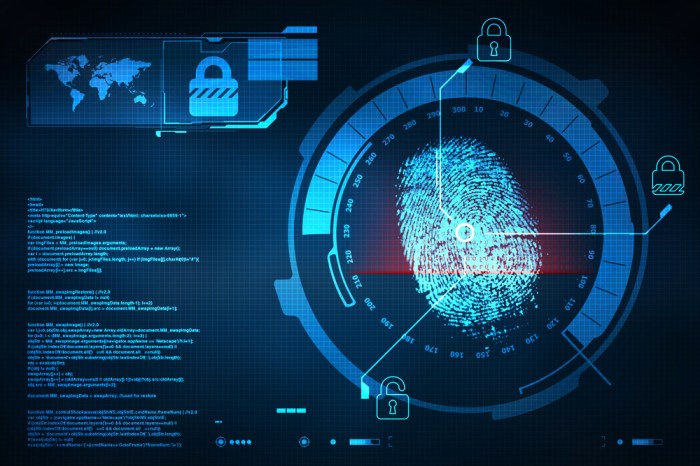In the realm of cybersecurity, digital forensics plays a pivotal role in safeguarding digital assets and mitigating threats. Digital Forensics in Cybersecurity – D431 delves into the intricacies of this specialized field, exploring its techniques, tools, and best practices. By understanding the methodologies and challenges involved in digital forensic investigations, cybersecurity professionals can effectively respond to incidents, preserve evidence, and ensure the integrity of digital data.
Digital forensics empowers cybersecurity experts with the ability to conduct thorough investigations, analyze electronic devices and networks, and uncover hidden evidence. This invaluable discipline contributes to the prevention, detection, and prosecution of cybercrimes, safeguarding sensitive information and maintaining the integrity of critical infrastructure.
Digital Forensics in Cybersecurity

Digital forensics plays a crucial role in safeguarding cybersecurity by providing a systematic approach to collecting, preserving, and analyzing digital evidence to detect, investigate, and respond to cyberattacks.
Digital forensic investigations involve the use of specialized techniques and tools to extract and analyze data from various electronic devices, such as computers, smartphones, and network devices. These techniques include data acquisition, disk imaging, file carving, and memory analysis.
Examples of Successful Digital Forensic Investigations in Cybersecurity Cases
- In 2014, digital forensics was instrumental in investigating the Sony Pictures hack, where hackers stole and released sensitive data, leading to the identification and prosecution of the perpetrators.
- In 2017, digital forensics played a key role in the investigation of the WannaCry ransomware attack, which affected over 200,000 computers worldwide. The investigation helped identify the source of the attack and develop countermeasures.
Challenges in Digital Forensics for Cybersecurity
Digital forensic analysts face several challenges in cybersecurity investigations, including:
- Data volatility:Digital evidence can be easily modified or deleted, making it challenging to preserve and recover.
- Volume and complexity of data:Cyberattacks often generate vast amounts of data, which can be overwhelming to analyze and interpret.
- Encryption and obfuscation:Attackers often use encryption and other techniques to hide their activities, making it difficult to access and analyze digital evidence.
Strategies for Overcoming Challenges and Improving Digital Forensic Capabilities
- Use specialized tools and techniques:Advanced digital forensic tools can help automate tasks, extract hidden data, and analyze large volumes of data efficiently.
- Collaborate with other experts:Collaboration with cybersecurity professionals, network administrators, and legal experts can provide valuable insights and support.
- Continuously update knowledge and skills:Digital forensics is a rapidly evolving field, and analysts must stay up-to-date with the latest techniques and tools.
Best Practices for Digital Forensics in Cybersecurity

To ensure the integrity and reliability of digital forensic investigations, it is essential to follow best practices, including:
Chain of Custody and Data Preservation
Maintaining a clear chain of custody is crucial to demonstrate the integrity of digital evidence. This involves documenting the handling and storage of evidence throughout the investigation.
Data preservation involves taking steps to ensure that digital evidence is not altered or destroyed during the investigation.
Reporting and Presenting Digital Forensic Findings
Digital forensic findings should be reported clearly and accurately, with proper documentation and support for conclusions. The findings should be presented in a way that is understandable to both technical and non-technical audiences.
Emerging Trends in Digital Forensics for Cybersecurity
Emerging technologies and techniques are continuously shaping the field of digital forensics for cybersecurity:
- Cloud forensics:The increasing adoption of cloud computing poses new challenges for digital forensics, requiring specialized techniques to collect and analyze data stored in the cloud.
- Artificial intelligence and machine learning:AI and ML algorithms can assist in automating digital forensic tasks, such as data analysis, pattern recognition, and anomaly detection.
- Blockchain forensics:Blockchain technology presents unique challenges and opportunities for digital forensics, requiring new techniques to investigate and analyze blockchain-based transactions.
Potential Benefits and Challenges of New Approaches
These emerging approaches offer potential benefits, such as increased efficiency, accuracy, and scalability. However, they also introduce challenges, such as the need for specialized skills and the potential for bias or errors.
Case Studies in Digital Forensics for Cybersecurity: Digital Forensics In Cybersecurity – D431

Real-world case studies provide valuable insights into the challenges and successes of digital forensic investigations in cybersecurity incidents:
- Case Study 1:A financial institution faced a targeted cyberattack, and digital forensics helped identify the source of the attack, track the movement of stolen funds, and recover critical data.
- Case Study 2:A healthcare organization experienced a ransomware attack, and digital forensics played a key role in identifying the attackers, recovering encrypted data, and implementing security measures to prevent future attacks.
Lessons Learned and Best Practices, Digital forensics in cybersecurity – d431
Case studies provide valuable lessons learned and best practices for conducting digital forensic investigations in cybersecurity incidents. These include the importance of collaboration, timely response, and the use of appropriate tools and techniques.
Top FAQs
What is the role of digital forensics in cybersecurity?
Digital forensics plays a crucial role in cybersecurity by providing the tools and techniques to investigate and analyze digital evidence in cybercrime cases, assisting in the identification and prosecution of perpetrators.
What are the challenges faced by digital forensic analysts in cybersecurity investigations?
Digital forensic analysts face challenges such as the vast amount of digital data, the complexity of cyberattacks, and the need for specialized skills and tools to effectively conduct investigations.
What are the best practices for conducting digital forensic investigations in cybersecurity incidents?
Best practices include maintaining a chain of custody, preserving data integrity, using validated tools and techniques, and documenting the investigation process thoroughly.
